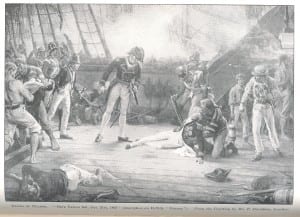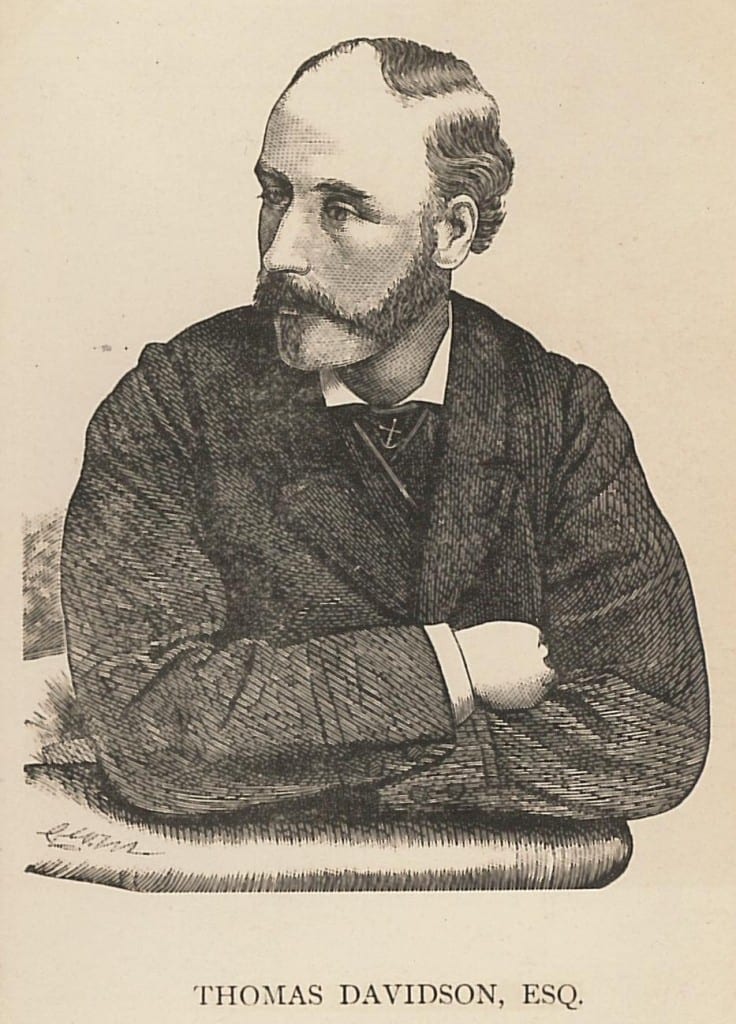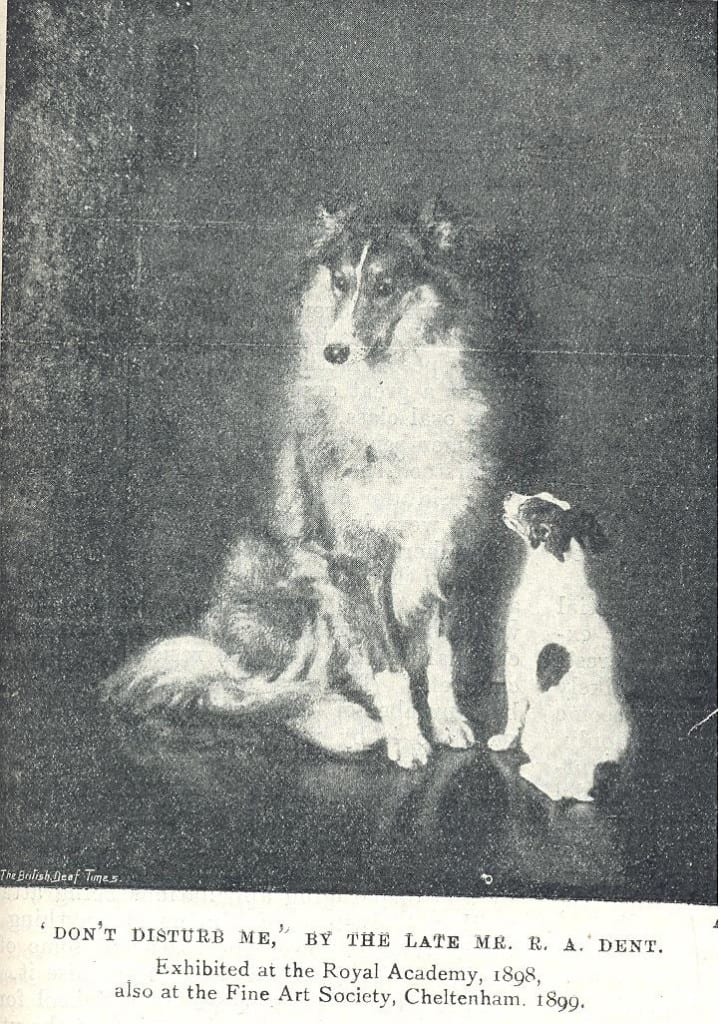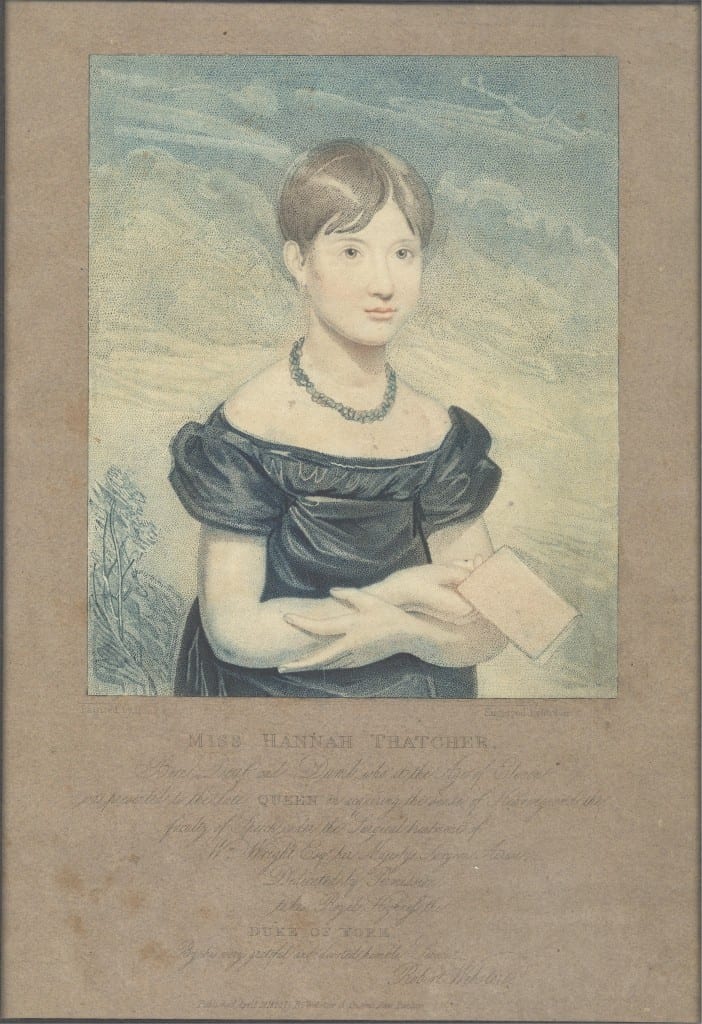Thomas Davidson, Deaf Artist – “he became a kindly hearted, liberal thinker”
By H Dominic W Stiles, on 16 May 2014
Thomas Davidson, R.A. (1842-1919), was an artist of great skill. He specialised in historical naval scenes, and also created memorable paintings illustrating the work of Emily Brontë . He had a close association with St. Saviour’s Church in Oxford Street, London, including being part of the Deaf and Dumb Debating Society, the R.A.D.D., and on the Committee of the Charitable and Provident Society for the Deaf and Dumb (Ephphatha).
Gilby says in his as yet unpublished memoirs, “The Men and women who were the backbone of the social club at St. Saviour’s, and who were very often seen there, were Thomas Davidson, the artist, Samuel Bright Lucas (son of Mrs.Margaret Lucas, foundress of the British Womens Temperance League), C W. Moore, the wood engraver, a friend of Brangwyn and other artists, W. Emerton the Emersons, W. H. Boughten, H. G. G. Ayshford, the wood engraver, and Hay Taylor.”
Davidson was born in London on 17th of January 1842, son of ‘Thomas Davidson Esq. of Hyde Park Corner’ (Deaf and Dumb Magazine).* The family came originally from Kelso in Scotland (British Deaf Mute). Losing his hearing aged four, young Thomas was sent as a private pupil to Thomas Watson, at the Old Kent Road Institution, then afterwards to a ‘hearing’ school in Clapham. He is said to have thought oral education important. He attended the School of Art at Marlborough House, (later home to the Prince of Wales) “under the two Whichelos” according to Gilby (Ephphatha). He also studied under “Mr. Carey of Bloomsbury, Mr. Leigh of Newman Street, and Mr. Alex. Johnston of Fitzroy Square” before going to the Royal Academy for ten years (Deaf and Dumb Magazine). The British Deaf Mute puts a Mr. Hatherly in there as well and I expect that it would be possible to research all these people to put Davidson’s development as an artist into context. Thomas was also the winner of Royal Academy silver medals, and in 1868 he shared a studio in Paris with Claud Calthorp, “attending M. Bonnett’s atelier”.
Davidson married in 1871 and had a large family with his wife Charlotte Douglas McHeath, who was also an exhibited artist. In 1881 they were living at 82 Park Road, Hampstead. His second son Douglas became a student at the Academy, while other children became an architect and a ‘news correspondent in Holland’.
Davidson died in Walberswick in Suffolk where he had retired, in November 1919.
“Looking towards the Altar, and on the right, a great picture by Thomas Davidson (himself deaf and dumb) called Ephphatha dominated the Church and decidedly was its principal adornment. We give an illustration of this picture, though the reproduction by no means conveys a proper idea of the glorious golden sunset which fills the rear ground.” (Gilby, Memoirs)
In Peeps Into the Deaf World, Roe quotes Davidson,
All the deaf should read a great deal, and that will give them more knowledge of the world, past and present. I am a great reader, and have read history, biography, books on travel, religion, and novels, besides the daily newspapers, and it is a great comfort – this reading – to one who is deaf, and to whom little is said.
In his obituary (Ephphatha), Gilby says that his “opinions and methods in art were conservative, but in many ways he was in advance of his time, and he became a kindly hearted, liberal thinker.”
The picture of Davidson here is by his friend C.W. Moore (Deaf and Dumb Magazine, 1879)
British Deaf-Mute, 1895, 4(40), 66. (illus)
Deaf and Dumb Magazine, 1879, 7(82), 152-54. (illus)
W.R. Roe, A distinguished deaf-mute artist, Peeps into the Deaf World, 1917, p.262-7 (illus)
F.W.G.G[ilby], Mr. Thomas Davidson, Ephphatha, 1920, no.45 p.576
* Thomas Davidson This website lists his father as George, but as he is listed as Thomas Davidson Junior in the list of subscribers to St. Saviour’s (for 1861-2) on the same page and at the same address as another Thomas Davidson, it seems clear that that website is in error. We are grateful to Dr. W. J. Lyons for this information.
 Close
Close












